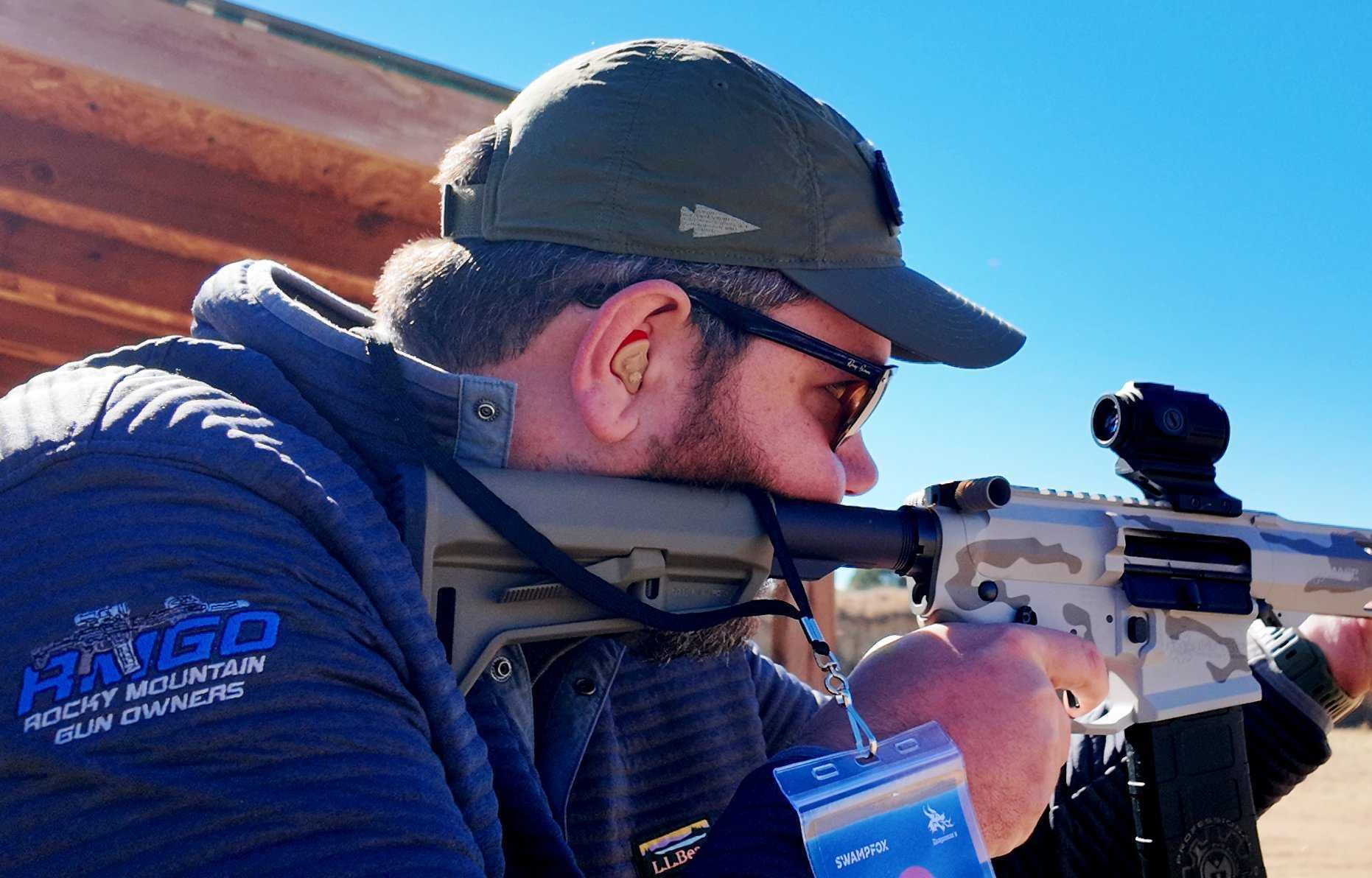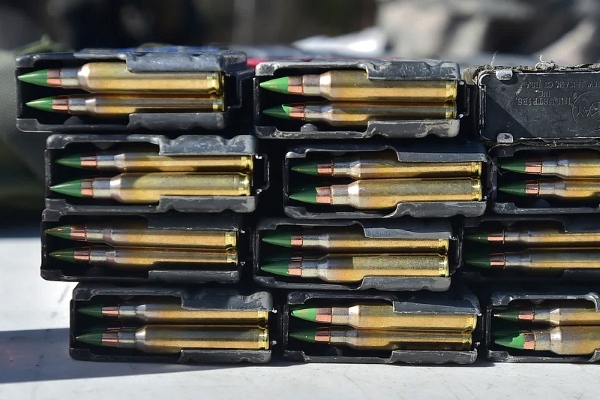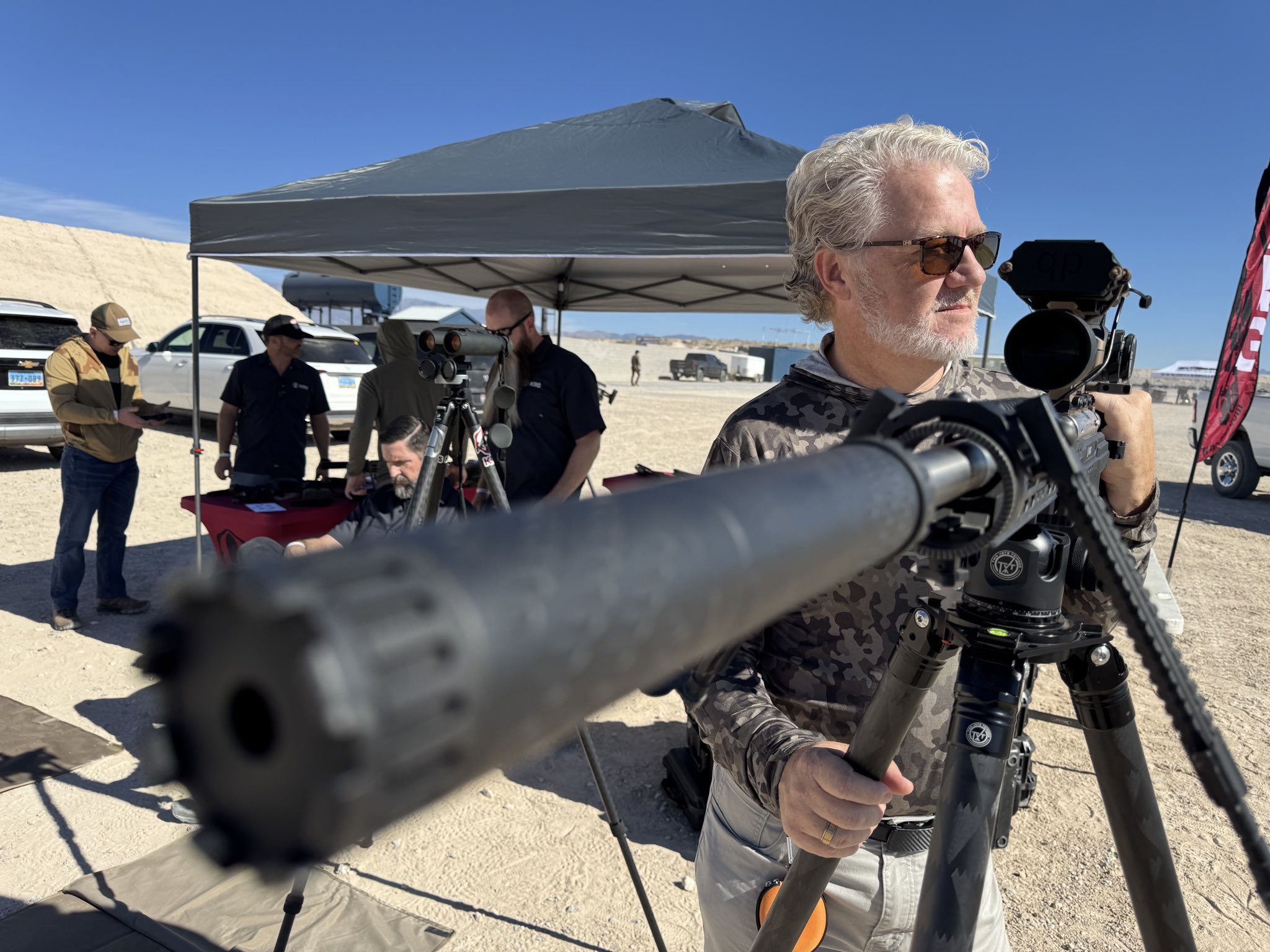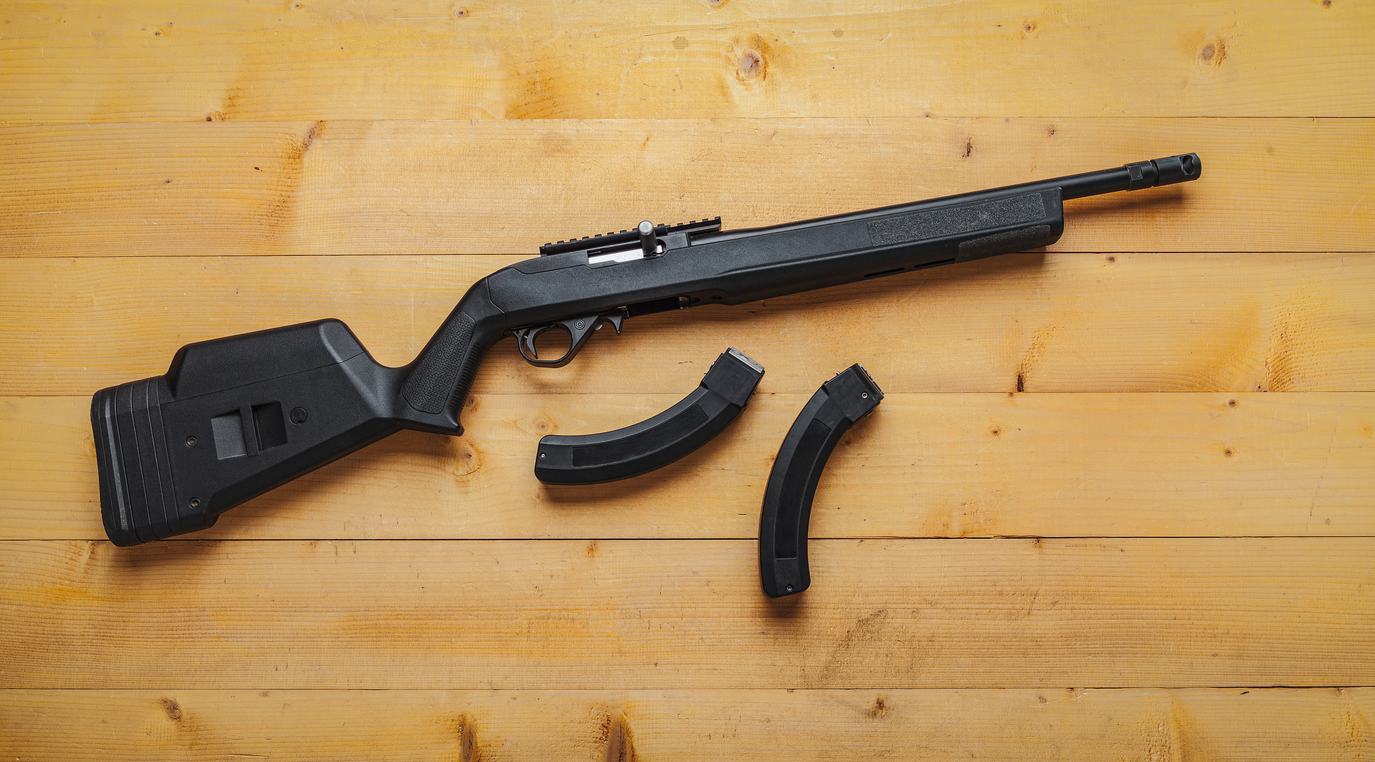If you’ve ever skipped ear protection for “just a few shots,” you’re gambling with one of your most valuable senses. The crack of a firearm is dangerously loud, often exceeding 190 decibels. That’s well past the threshold for permanent hearing damage; the effects can show up immediately… or sneak up on you later.
I learned this lesson (again) the hard way over the weekend.
While running drills with the boys, I wasn’t as careful as I should have been about when I had my hearing protection on. Between swapping gear and talking with friends, I let a few shots slip by without proper coverage. I felt fine at the time, but by Monday morning, I woke up with a sore throat, ear pain, and pressure that felt like the start of an ear infection. It was a stark reminder that hearing loss and ear problems don’t always come from years of abuse; sometimes, it’s just one careless day.
The Science: How Gunfire Damages Your Hearing
Here’s the reality:
- A single gunshot near your ear can generate noise over 190 dB, louder than a jet engine and strong enough to cause instant damage.
- Even repeated exposure to noise around 90 dB (about the level of a lawn mower) can contribute to hearing loss over time.
Without protection, every trigger pull sends shockwaves through your inner ear. Those tiny hair cells inside your cochlea — the ones responsible for translating sound into signals your brain can understand — don’t grow back. Once they’re damaged, they’re gone for good.
Common Symptoms After Shooting Without Ear Protection
If you’ve recently fired without hearing protection, watch for these warning signs:
- Ear Pain – Ranging from mild pressure to sharp, stabbing discomfort.
- Tinnitus – A ringing, buzzing, or high-pitched tone that may fade or persist indefinitely.
- Temporary or Permanent Hearing Loss – Difficulty hearing specific frequencies, muffled sound, or trouble understanding speech.
If any of these symptoms appear, especially within 48 hours after shooting, consider seeing a doctor. Early intervention is key to preventing long-term damage.
Choosing the Right Hearing Protection for Shooting
The good news? Modern hearing protection is more advanced than ever, offering clarity for conversation and environmental awareness while cutting down dangerous noise. Here are solid options in different price ranges:
Budget-Friendly
Howard Leight Impact Sport – Affordable electronic muffs that amplify quiet sounds while protecting from loud blasts.
The Howard Leight Impact Sport Electronic Earmuffs have earned a strong reputation as one of the best affordable hearing protection options for shooters. Priced as low as $43 on Amazon, they offer an excellent balance of performance, comfort, and durability for the money. These muffs amplify low-level sounds like range commands, conversations, or the rustle of game in the field, while instantly cutting off amplification when noise levels exceed 82 decibels. This means you can stay situationally aware without exposing your ears to dangerous sound levels from gunfire.
With a Noise Reduction Rating (NRR) of 22 dB, they’re effective for most outdoor shooting scenarios, though indoor ranges or high-brake rifles may benefit from doubling up with foam plugs for added protection. The slim, low-profile earcups are designed to avoid interference when shouldering a rifle or shotgun, and the lightweight build makes them comfortable for long training days. A built-in 3.5mm input lets you plug in audio devices, and the long battery life—up to 350 hours with an automatic four-hour shutoff—ensures they’re always ready when you need them.
While they can get a bit warm during extended summer sessions and don’t offer the maximum protection rating on the market, their overall value makes them a go-to choice for both new and experienced shooters. For those who want more tech, a Bluetooth-enabled version is also available, allowing wireless audio streaming and phone connectivity without sacrificing the core protective features that make the Impact Sport a range favorite.
Walker’s Razor Slim – Lightweight, low-profile muffs with decent sound quality for the price.
The Walker’s Razor Slim Electronic Muffs are my go-to pick in the budget hearing protection category, and for good reason. At around $50 or less, they balance affordability, comfort, and dependable performance.
I keep several pairs stashed in my truck at all times, because I’ve learned that when you’re shooting with friends—especially new shooters—someone inevitably forgets their ear protection. The Razor Slims are inexpensive enough to buy in multiples, yet built well enough that you wouldn’t want to lose them.
Their low-profile earcups make them comfortable to wear with long guns, and the slim design helps maintain a proper cheek weld without interference. Sound quality is solid for the price, with amplification that allows for everyday conversation and environmental awareness, while loud noises like gunfire are automatically compressed to safe levels. The fit is snug without being uncomfortable, and the lightweight build makes them easy to wear for extended range sessions.
While they don’t offer the same premium feel or advanced features as higher-end options, they’re more than capable for casual shooting, hunting, or as a reliable backup pair. If you want something you can hand to a buddy without worrying about cost, but still trust for protection, the Walker’s Razor Slim is hard to beat.
Mid-Range
AXIL GS Extreme 2.0 – In-ear electronic protection with Bluetooth streaming capability.
The AXIL GS Extreme 2.0 is a versatile in-ear hearing protection option that blends electronic sound control with modern Bluetooth streaming. Priced around $200–$250, it’s a strong choice for shooters who want compact protection without the bulk of earmuffs. The electronic hearing enhancement lets you hear conversations, range commands, and subtle environmental sounds, but instantly compresses harmful noise from gunfire to safe levels. Bluetooth capability means you can stream music or take phone calls without changing gear, making them just as useful off the range as on it.
For those who prefer an over-the-ear setup in this same feature range, I’m also a fan of the AXIL MX Pro. While they share the GS Extreme’s Bluetooth and sound amplification features, the MX Pro offers a more traditional earmuff fit and slightly higher passive noise reduction—ideal if you spend more time at indoor ranges or in higher-volume shooting environments.
The GS Extreme 2.0 includes multiple ear tip sizes for a secure, custom fit, and its low-profile design ensures nothing gets in the way of a proper cheek weld. Battery life is strong, with independent controls for Bluetooth and hearing enhancement so you can extend usage as needed. While in-ear protection generally won’t match the NRR of a top-tier earmuff, the GS Extreme’s portability, versatility, and everyday usability make it a favorite for shooters who want one piece of gear that can do it all.
Sordin Pro-X LED Ear Muffs – Comfortable over-ear protection with excellent sound compression.
The Sordin Pro-X LED Ear Muffs are one of the best all-around premium hearing protection options for shooters who want durability, comfort, and excellent sound reproduction without going fully into the ultra-high-end price tier. Priced around $300–$350, they’re built for serious range work, hunting, and tactical use. I personally own a pair and have used them for a very long time. Frankly, they served me exceptionally well for nearly 4 years until I was able to save up for something on the true high-end, professional side of the coin. Even after upgrading, I still consider the Pro-X to be an incredible value for the performance you get.
These muffs excel in audio clarity. Their electronic amplification delivers natural, crisp sound for conversations and range commands, while impulse noises like gunfire are instantly compressed to safe levels. The integrated LED light is a surprisingly practical feature for early morning hunts, evening range sessions, or navigating gear in low light—saving you from having to juggle a separate flashlight. The gel ear seals are a standout comfort upgrade, offering all-day wearability without the pressure points common in cheaper models, and they also improve passive noise isolation. With a low-profile design, water-resistant components, and rugged build quality, they handle both field and range environments with ease.
While their NRR isn’t as high as some larger, bulkier muffs, the Sordin Pro-X LED strikes a perfect balance between protection, situational awareness, and long-term comfort. For shooters looking for a serious step up from entry-level options—but without jumping straight into the most expensive professional gear—these muffs deliver extreme value for the price and can easily serve as a trusted workhorse for years.
High-End / Professional
ESP Apex (My Pick for In-Ears) – Custom-molded, electronic in-ear protection with crystal-clear sound and unmatched comfort for long shooting days.
The ESP Apex represents the pinnacle of in-ear hearing protection for serious shooters, and it’s my go-to choice for just about every range day, training class, or hunting trip. At roughly $2,500, these aren’t an impulse buy, but the combination of performance, comfort, and durability makes them one of the best investments in shooting gear.
The custom fit sets the Apex apart from anything else I’ve tried. Each set is precision-molded from impressions of your ears, so they seal perfectly every time you put them in. That seal isn’t just about comfort; it’s critical for maximum passive noise reduction, which pairs with the Apex’s electronic sound compression to create outstanding protection against impulse noises like gunfire. I’ve worn them for full-day training sessions (8-10 hours) in hot, cold, and wet weather without so much as a sore spot or adjustment break. The lightweight, low-profile design means I never worry about interference with rifle stocks, cheek weld, or headgear. I can even wear them under ear muffs if I need extra protection in extreme noise environments – which I have done in a night vision class when several of my classmates were shooting unsuppressed.
The audio performance is simply exceptional. Voices are reproduced with a natural, uncolored tone, no tinny or “mechanical” sound that you sometimes get with cheaper electronic options. Subtle environmental cues, like a clay thrower cycling or game moving through brush, come through clearly, while loud gunfire is instantly reduced to safe listening levels without that lag or clipping effect you sometimes notice with lower-tier electronics. This natural sound profile is a massive advantage for situational awareness on the range and in the field.
One quirk worth noting: you must remove the batteries after each use. If left inside, the circuitry continues to draw power even when switched off (the issue isn’t turning them off, it is keeping them off because the way the case sits, they regularly move around, which engages the volume/power wheel), leading to premature battery drain. It’s a minor inconvenience for something at this price point, but easily manageable with the proper routine. The trade-off is that the battery life is excellent when appropriately managed, and replacement batteries are inexpensive and easy to carry in the provided case.
The build quality is every bit as premium as the performance. Each set is made in the USA using durable, water-resistant materials, and ESP offers a robust warranty and responsive customer service for maintenance or adjustments over the years. I’ve put mine through countless hours of use—everything from competition stages to backcountry hunts—and they’ve performed flawlessly.
If you can reasonably afford the ESP Apex, I would encourage you to make the investment. They’re the kind of gear you buy once, protect for life, and never feel the need to upgrade. For me, they’ve set the standard for what professional-grade, in-ear electronic hearing protection should be.
3M PELTOR ComTac V (When I Need Comms) – Military-grade muffs designed for tactical environments, compatible with communication systems.
The 3M PELTOR ComTac V is professional-grade hearing protection built for military, law enforcement, and serious shooters who demand rock-solid performance and integrated communications capability. While these muffs are overkill for a casual day at the range, they shine in training, tactical work, or any scenario where reliable comms and situational awareness are as important as hearing protection. Depending on the configuration, you can expect to pay between $800 and $1,000—putting them in the high-end category, but still well below the cost of top-tier in-ear customs like the ESP Apex.
I primarily run the ComTac V when integrating with communications gear. The external downlead ports and boom mic compatibility make them plug-and-play with radios, intercoms, or team comm systems, and the audio quality is outstanding on both transmit and receive. The ComTac V uses 3M’s advanced environmental listening technology to process ambient sounds in 3D, allowing you to pinpoint direction and distance with surprising accuracy. That’s a major advantage in training environments with multiple shooters, or while hunting and trying to locate game movement.
The hearing protection is excellent, with an NRR around 23 dB and active sound compression that instantly reacts to loud impulse noise without chopping off the beginning of speech or environmental sounds. The low-profile earcups fit well under helmets or brimmed hats, and the slim build allows for a solid cheek weld with rifles. Comfort is enhanced by replaceable gel ear seals, which I highly recommend upgrading if you run them for longer than an hour or two.
Durability is where the ComTac VI really earns its keep. They’re built to military specifications, water-resistant, and rugged enough to withstand repeated abuse in the field. The controls are glove-friendly, and the dual-comm capability means you can run two different radio channels simultaneously—a feature that’s overkill for most shooters, but absolutely invaluable if you operate in team environments.
While I don’t grab these for every range session, they’re heavier and bulkier than my ESP Apex in-ears, they’re my go-to when I need reliable comms integration or expect to be in an environment where full-ear coverage and professional-grade durability are a must. For serious shooters, trainers, or anyone running radios as part of their shooting activities, the 3M PELTOR ComTac V is worth every penny.
Final Thoughts
The temptation to “just take a few shots” without ear protection is real, but so are the consequences.
The ringing, the pressure, the muffled voices you can’t quite understand… those aren’t just annoyances; they’re warning signs your hearing has taken a hit it may never recover from. I got my own reminder of that this week, and it didn’t take a thousand rounds to do it—just a few careless moments.
Your hearing is like ammo; you don’t get it back once it’s gone. So whether it’s a $50 pair of budget muffs or a custom $2,500 in-ear setup, find protection that works for your shooting style, keep it with you, and use it every time.
About the Author
Taylor Rhodes is the Director of Communications at the National Association for Gun Rights. A seasoned political strategist and unapologetic defender of the Second Amendment, Taylor has led high-impact campaigns at both the state and national levels. He lives in Hoover, Alabama, with his wife, Madison, and enjoys bourbon, golf, and collecting firearms—especially his 12.5” Geissele Super Duty.




